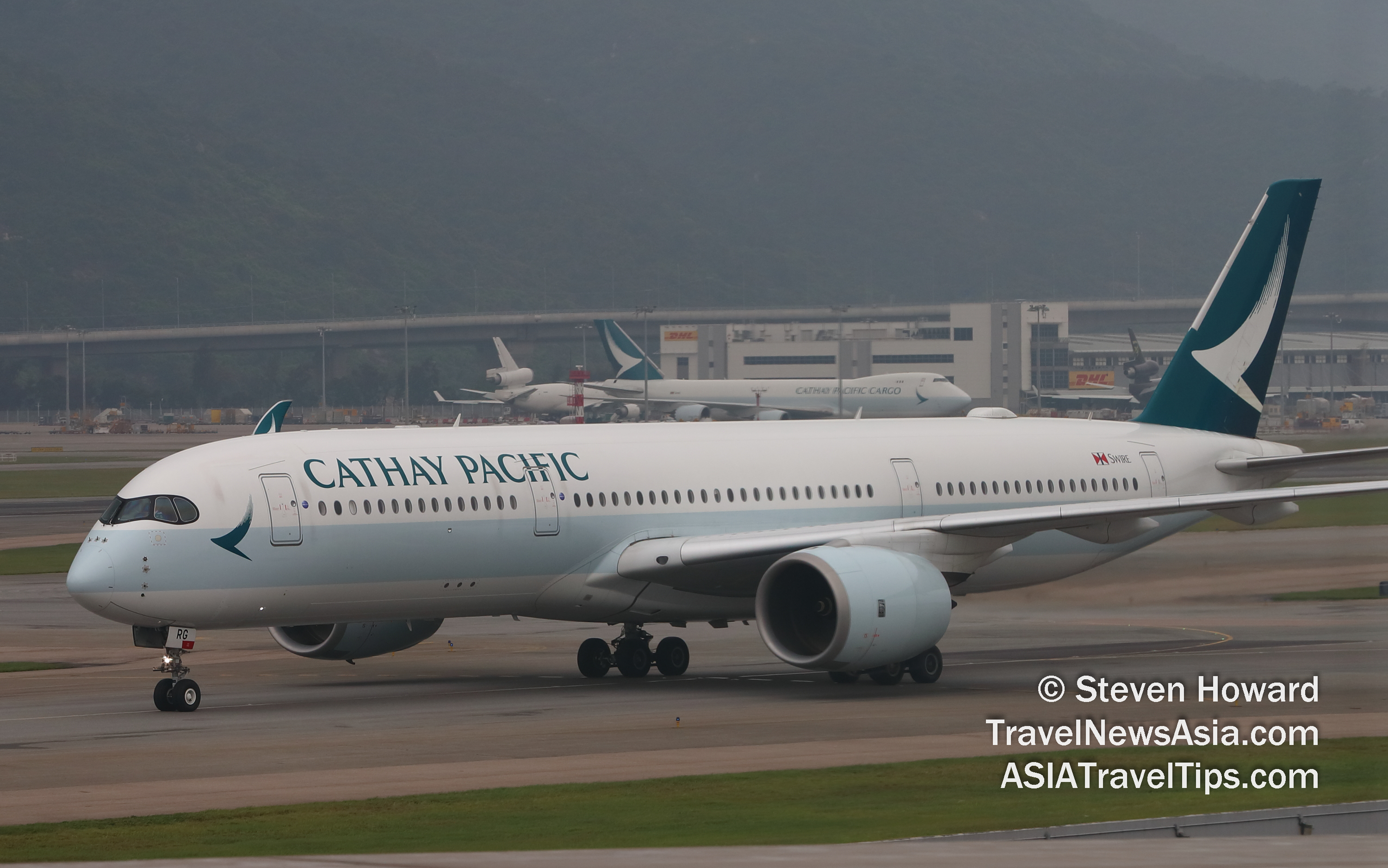|
Cathay Pacific and Cathay Dragon carried a total
of 2,994,830 passengers in December 2019, a decline of 3.6%
compared to the same month in 2018.
The passenger load factor increased by 1.2
percentage points to 85%, while capacity, measured in available
seat kilometres (ASKs), decreased by 1.3%.
For 2019 as a whole, the number of
passengers carried declined by 0.7% against a 5.1% increase in
capacity as compared to 2018.

Cathay Pacific Group Chief Customer and Commercial
Officer, Ronald Lam, said, �Demand for travel into Hong Kong
continued to be weak in December with our inbound passenger
traffic seeing a year-on-year decline of 46% � unchanged from
November. The sentiment for travel into Hong Kong was particularly
weak on our regional routes such as mainland China, Taiwan and
Japan. On the brighter side, our long-haul routes performed well
with better load factors. Outbound traffic, meanwhile, was down 4%
� a further improvement over the previous few months, but still
significantly below what we would expect for a peak holiday month. Given the overall weak performance of both our inbound and
outbound traffic, we remained heavily focused and reliant upon
lower-yield transit traffic via Hong Kong, which grew by 15%
compared to the same time in 2018. Overall, our passenger load
factor in December improved by 1.2 percentage points from last
year to 85%, partly due to a 1.3% reduction in capacity. 2019
was an incredibly challenging year for both the Cathay Pacific
Group and Hong Kong. Our full-year load factor remained above 82%
despite being 1.8 percentage points lower compared with 2018.
Intense competition, particularly during the non-peak period,
along with our greater reliance on transit traffic have continued
to place significant pressure on yield.�
The two airlines carried 177,561
tonnes of cargo and mail in December 2019, a decrease of 2.9%
compared to in December 2018.
The cargo and mail load factor
declined by 1.3 percentage points to 66.4%. Capacity, measured in
available freight tonne kilometres (AFTKs), was down by 3.8% while
cargo and mail revenue freight tonne kilometres (RFTKs) dropped by
5.7%.
For 2019 as a whole, the tonnage fell by 6.1% against a 0.3%
reduction in capacity and a 6.7% decrease in RFTKs as compared to 2018.
�On the cargo side, our overall volume in
December was on par with November and we enjoyed good all-round
support from and to all the regions in our network all the way
through to the final week of the year. Our mainland China and
Southwest Pacific routes were the outstanding performers,
recording both month-on-month and year-on-year improvement in
sales. Our focus on specialised cargo solutions continued to offer
positives; we carried more mail and Fresh LIFT cargo, backed by
strong demand for e-commerce and seasonal produce towards the end
of the year. We also celebrated our first ever freighter flight to
South America, carrying seasonal cherries from Chile back to
Asia,� Mr Lam said.
�As previously reported, our second-half performance will be
significantly below that of the first half. We anticipate 2020
will continue to present us with a highly challenging operating
environment. We remain agile in our operations, ensuring our
capacity is best aligned with demand. As announced last month, we
are reluctantly reducing our overall seat capacity in 2020 by 1.4%
year-on-year as opposed to our original plan of 3.1% growth in
light of the immediate commercial challenges we are facing.�
This year, Cathay Pacific is scheduled to take
delivery of its first Airbus A321neo is preparing for the Boeing
777-9 aircraft as well.
See latest
Travel News,
Interviews,
Podcasts
and other
news regarding:
Cathay Pacific,
Traffic,
ASKs,
AFTKs,
RFTKs.
|
Headlines: |
|
|
